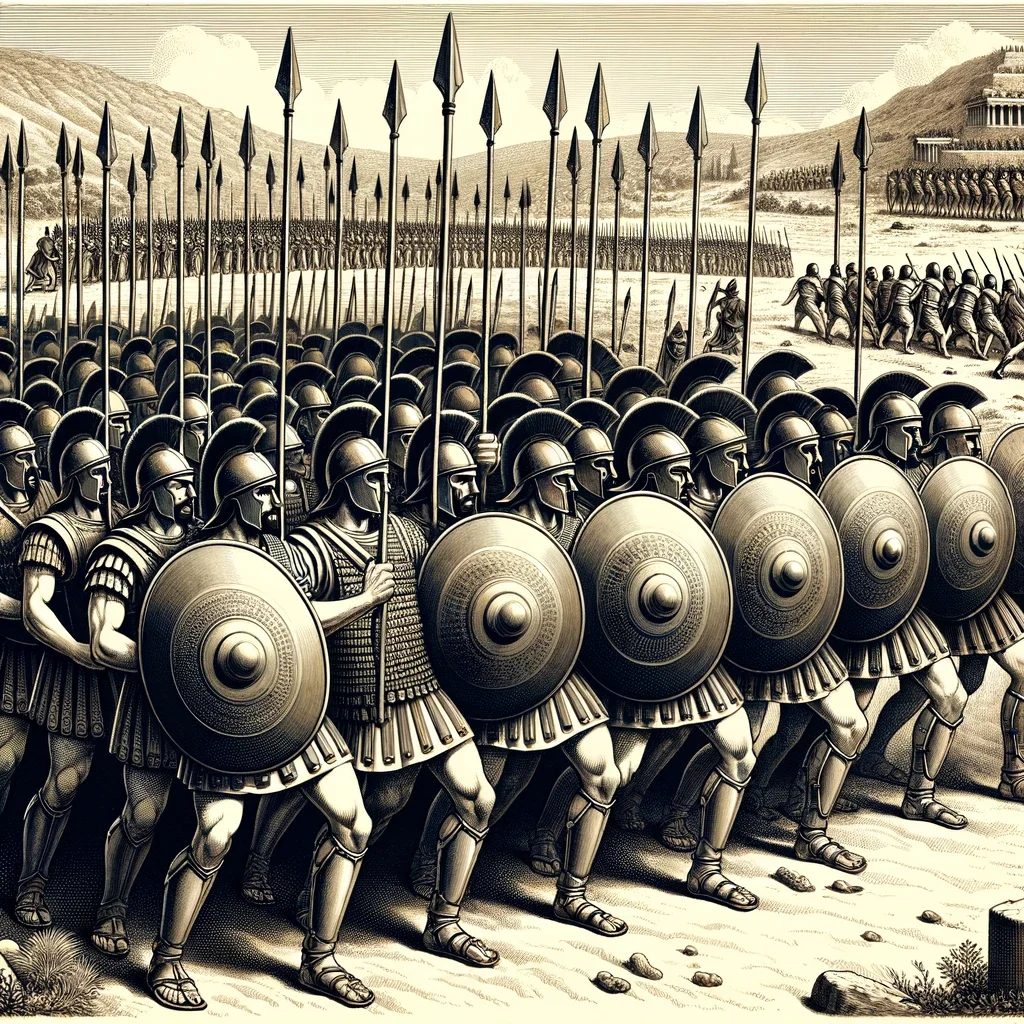The Phalanx formation was a revolutionary military tactic utilized by ancient Greek armies to dominate the battlefield. Consisting of heavily armed infantry soldiers standing shoulder to shoulder in a tight formation, it provided better coordination and control in battle. The overlapping shields and spears created a solid barrier that was difficult for enemies to penetrate, offering protection and offensive capabilities. Historical examples like the Battle of Marathon and Battle of Thermopylae showcase the effectiveness of the Phalanx formation in securing victories against larger forces. Its legacy can still be seen in modern military tactics, highlighting its importance in ancient Greek military success.
The Phalanx Formation: How Ancient Greek Armies Dominated the Battlefield
Introduction
The Phalanx formation was a revolutionary military tactic utilized by the ancient Greek armies to dominate the battlefield. This formation, characterized by heavily armed infantry soldiers standing shoulder to shoulder in a tight formation, allowed for better coordination and control on the battlefield. It was one of the key factors that contributed to the success of Greek armies in numerous battles against their enemies.
Formation and Tactics
The Phalanx formation consisted of heavily armored infantry soldiers, known as hoplites, standing shoulder to shoulder with their shields overlapping. This created a solid wall of shields and spears that was difficult for enemies to penetrate. The soldiers in the front row held their spears outwards, while those in the back rows held them vertically, creating a formidable barrier that was difficult for enemy forces to break through.
The Phalanx formation required a high level of discipline and coordination among the soldiers. They had to move and fight as one unit, maintaining their formation even under the most intense pressure. This required rigorous training and practice to ensure that every soldier knew their role and could respond quickly to changing battlefield conditions.
Advantages of the Phalanx Formation
The Phalanx formation offered several advantages to the ancient Greek armies. One of the main advantages was the protection it provided to the soldiers. The overlapping shields and tightly packed formation made it difficult for enemy forces to break through and attack individual soldiers. This allowed the soldiers to move and fight as one unit, presenting a solid front that was difficult for enemies to defeat.
Another advantage of the Phalanx formation was its offensive capabilities. The soldiers in the front row could use their spears to push back enemy forces, while those in the back rows could provide support and reinforcements. This allowed the Phalanx formation to advance steadily across the battlefield, pushing back enemy forces and gaining ground with each step.
Historical Examples
The Phalanx formation was used with great success by the ancient Greek armies in numerous battles. One of the most famous examples is the Battle of Marathon in 490 BC, where the Athenian army used the Phalanx formation to defeat a much larger Persian army. The tight formation and disciplined soldiers of the Phalanx allowed the Athenians to hold off the Persian forces and secure a decisive victory.
Another famous example is the Battle of Thermopylae in 480 BC, where a small force of Greek soldiers held off the massive Persian army for several days using the Phalanx formation. Despite being vastly outnumbered, the Greek soldiers were able to hold their ground and inflict heavy casualties on the Persian forces, showcasing the effectiveness of the Phalanx formation in battle.
Legacy of the Phalanx Formation
The Phalanx formation was a revolutionary military tactic that changed the way wars were fought in ancient Greece. Its disciplined soldiers and tightly packed formation allowed Greek armies to dominate the battlefield and secure important victories against their enemies. The legacy of the Phalanx formation can still be seen in modern military tactics, with many armies using similar formations and strategies to achieve success on the battlefield.
In conclusion, the Phalanx formation was a crucial factor in the success of ancient Greek armies on the battlefield. Its disciplined soldiers and tightly packed formation allowed for better coordination and control, enabling Greek armies to defeat larger and more powerful enemies. The Phalanx formation remains a testament to the ingenuity and military prowess of the ancient Greeks, showcasing their ability to adapt and innovate in the face of adversity.
